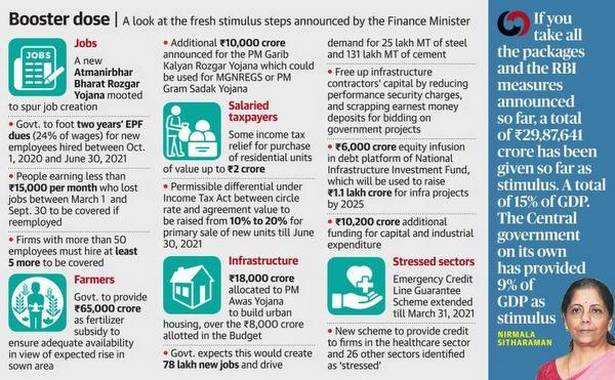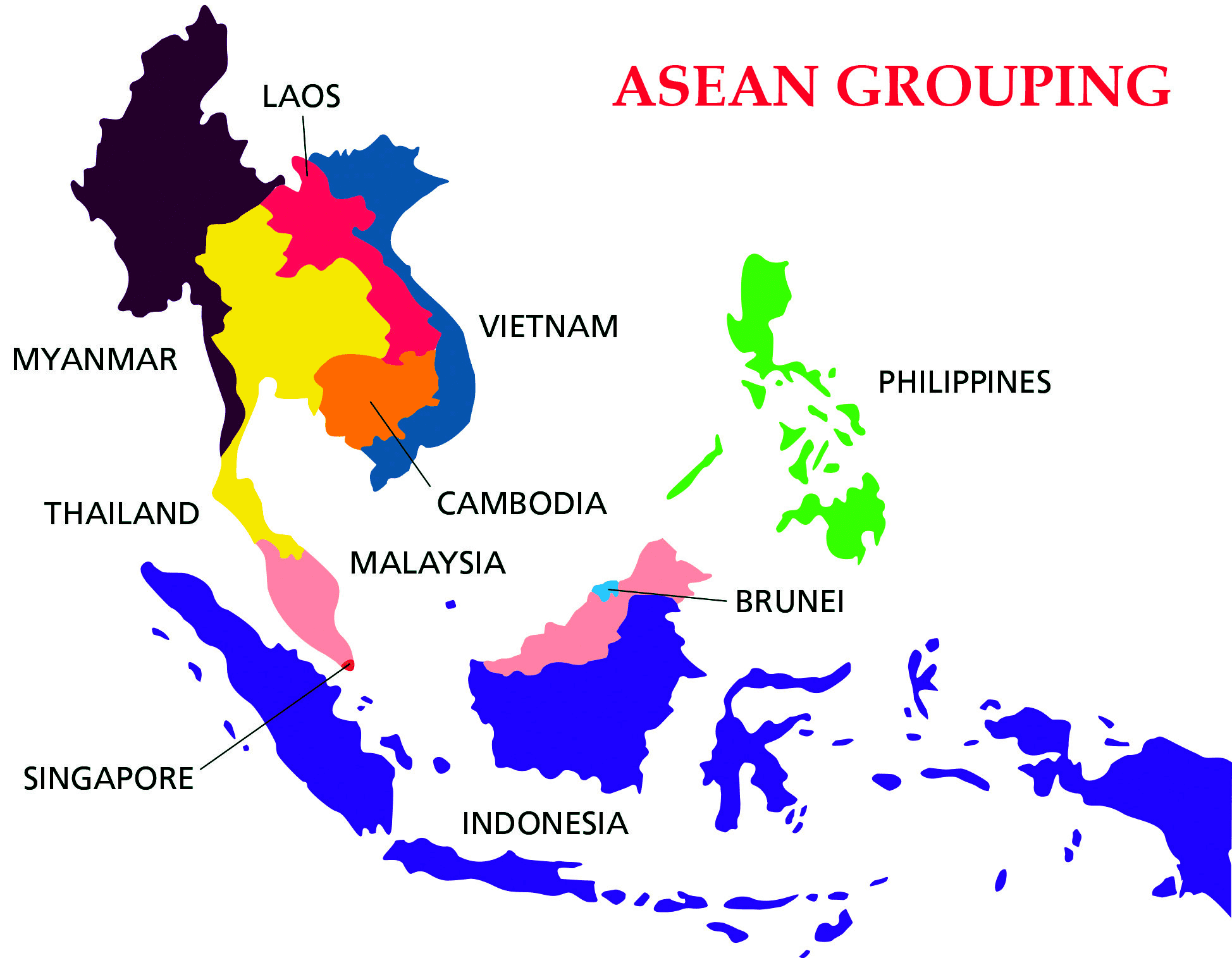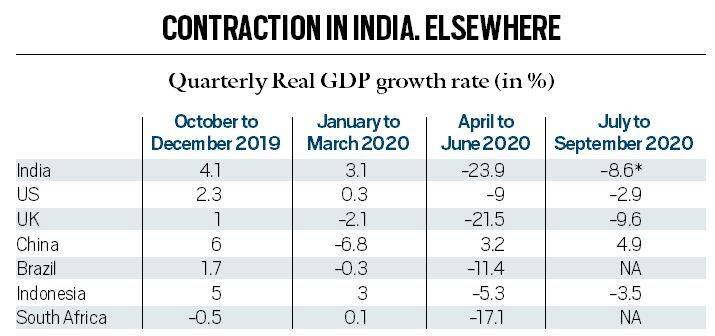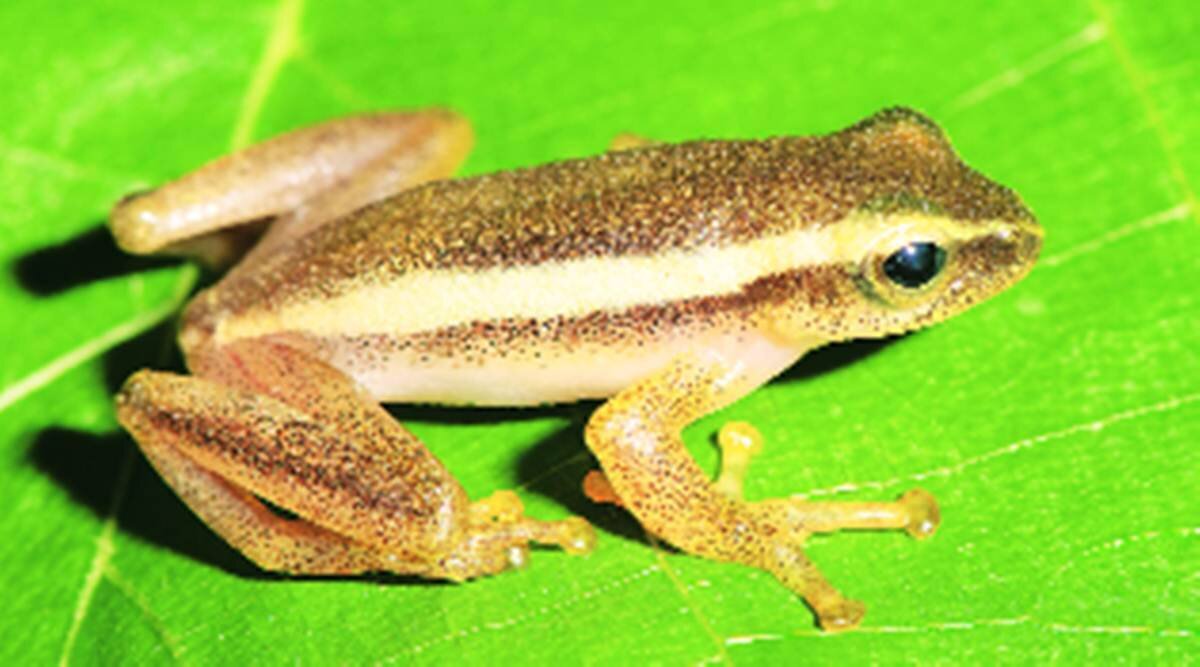Indian Economy
Measures on Atmanirbhar Bharat 3.0
Why in News
The government has announced a fresh set of measures, worth around Rs. 1.2 lakh crore, to boost job creation, provide liquidity support to stressed sectors and encourage economic activity in housing and infrastructure areas.
- An additional outlay of Rs. 65,000 crore is being provided as a fertiliser subsidy to support increasing demand on the back of a good monsoon and sharp increase in the crop-sown area.
- The measures have been announced under Aatmanirbhar Bharat 3.0. The recent announcement of Expansion of Production Linked Incentives (PLI) Scheme to 10 more sectors is also a part of Atmanirbhar Bharat 3.0.
Key Points
- Atmanirbhar Bharat Rozgar Yojana:
- Aim: It is aimed at incentivising the creation of new employment opportunities during the Covid-19 economic recovery phase.
- Government Contribution: It will provide subsidy for provident fund contribution for adding new employees to establishments registered with the Employees’ Provident Fund Organisation (EPFO).
- The organisations of up to 1000 employees would receive employee’s contribution (12% of wages) & employer’s contributions (12% of wages), totalling 24% of wages, for two years.
- Employers with over 1,000 employees will get employees’ contribution of 12%, for two years.
- The subsidy amount under the scheme will be credited upfront only in Aadhaar-seeded EPFO accounts (UAN) of new employees.
- Eligibility Criteria for Establishments: Establishments registered with EPFO will be eligible for the benefits if they add new employees compared to the reference base of employees as in September 2020.
- Establishments, with up to 50 employees, would have to add a minimum of two new employees.
- The organisations, with more than 50 employees, would have to add at least five employees.
- Target Beneficiaries:
- Any new employee joining employment in EPFO registered establishments on monthly wages less than Rs. 15,000.
- Those who left their job between 1st March to 30th September and are employed on or after 1st October.
- Time Period: The scheme will be effective from 1st October, 2020 and operational till 30th June 2021.
- ECLGS 2.0:
- Emergency Credit Line Guarantee Scheme (ECLGS) 2.0 is being launched for the Healthcare sector and 26 stressed sectors (as identified by the Kamath Committee) with credit outstanding of above Rs. 50 crore and up to Rs. 500 crore as on 29th February 2020 stressed due to Covid-19, among other criteria.
- Entities will get additional credit up to 20% of outstanding credit with a tenor of five years, including a 1 year moratorium on principal repayment.
- This scheme will be available till 31st March, 2021.
- Additional Outlay for PM Awas Yojana - Urban:
- A sum of Rs. 18000 crore is being provided for PMAY- Urban over and above Rs. 8000 Crore already allocated this year.
- This will help ground 12 Lakh houses and complete 18 Lakh houses, create additional 78 Lakh jobs and improve production and sale of steel and cement, resulting in a multiplier effect on the economy.
- PMAY - Urban Mission was launched in 2015 with an intention to provide housing for all in urban areas by year 2022.
- Relaxation of Earnest Deposit Money & Performance Security on Government Tenders:
- Performance security deposit on contracts has been reduced to 3% from around 5-10%, while Earnest Deposit Money (EMD) will not be required.
- The relaxations provided till 31st December, 2021 will be a major relief to the construction sector as it will free up the capital of the contractors and will enhance their financial ability to carry out the project.
- Security Deposit: The contractor is required to deposit with the owner a sum stated as a percentage of the cost of the work in order to safeguard the interests of the owner in the event of improper performance of the contract.
- Earnest money: It is assurance or guarantee in the form of cash on the part of the contractor to keep open the offer for consideration and to confirm his intentions to take up the work accepted in his favour for execution as per terms and conditions in the tender.
- Income Tax relief for Developers & Home Buyers:
- Developers have been allowed to sell their housing units at 20% lower than the circle rate by increasing the permissible differential from 10% to 20% (Section 43 CA of IT Act).
- Circle rates, also known as ready-reckoner rates, are official area-wise prices set by state governments and are considered by the Income-Tax Department to assume purchase prices.
- The government has allowed a differential of 20% between actual prices and circle rates, up from 10% earlier.
- The benefit will, however, be available only on primary sale of residential units with price value up to Rs. 2 crore until 30th June, 2021.
- Developers have been allowed to sell their housing units at 20% lower than the circle rate by increasing the permissible differential from 10% to 20% (Section 43 CA of IT Act).
- Infra Debt Financing:
- Government will make Rs. 6,000 Crore equity investment in debt platform of National Investment and Infrastructure Fund (NIIF), which will help NIIF provide a debt of Rs. 1.1 Lakh Crore for infrastructure projects by 2025.
- Boost for Rural Employment:
- Additional outlay of Rs. 10,000 Crore is being provided for PM Garib Kalyan Rozgar Yojana to provide rural employment. This will help accelerate the rural economy.
- Boost for Project Exports:
- Rs. 3,000 Crore boost is being provided to EXIM Bank for promoting project exports under Indian Development and Economic Assistance Scheme (IDEAS Scheme).
- Under the IDEAS Scheme, most recipient countries get Indian firms executing projects such as railway lines, transmission lines and so on.
- Capital and Industrial Stimulus:
- Rs. 10,200 Crore additional budget stimulus is being provided for capital and industrial expenditure on domestic defence equipment, industrial infrastructure and green energy.
- R&D grant for Covid Vaccine:
- Rs. 900 Crore is being provided to the Department of Biotechnology for Research and Development of Indian Covid Vaccine.
Analysis
- The latest announcement reinforces the ‘fiscal conservatism’ ideology of the government, i.e. rather than large cash transfers, the growth philosophy centres around creating an ecosystem that aids domestic demand, incentivises companies to generate jobs and boost production, and simultaneously extends benefits to those in severe distress, be it firms or individuals.
- The measures follow a multi-pronged approach, aimed at generating employment and encouraging formalisation of the workforce in urban areas, expanding the scope of distress employment provided in rural areas, easing the flow of credit to stressed parts of the economy, expanding the incentives offered to boost domestic manufacturing, and kickstarting the real estate cycle, among others.
- Put together, all Covid-19 relief measures would increase the Centre’s actual fiscal outgo by under 2% of GDP in 2020-21.
- As per the government, the total stimulus announced by the Government and Reserve Bank of India (RBI) till date (including Atmanirbhar 1.0 and Atmanirbhar 2.0), to help the nation tide over the Covid-19 pandemic, works out to Rs. 29.87 lakh crore, which is 15% of national GDP.
- Out of this, the stimulus worth 9% of GDP has been provided by the government.
Way Forward
- The government’s announcements focus on job creation, easing credit flow, but actual spending remains limited. More support is needed.
- The finance ministry’s view of the state of the economy suggests that it believes a strong and durable recovery is taking hold. This is partly in line with the results of a study carried out by economists at the RBI, who now expect the economy to contract at a slower pace in the second quarter than what was expected before.
- As the RBI noted in its ‘State of the Economy’ report, while it is possible that the third quarter (October-December) may not see a contraction in GDP growth, there are significant risks — relentless pressure of inflation, poor global growth following a second wave of Covid-19, and intensifying stress among households and firms both. Thus, the government needs to take steps accordingly.
International Relations
17th ASEAN-India Summit
Why in News
Recently, India has participated in the 17th ASEAN-India Virtual Summit on the invitation of Vietnam, the current Chair of Association of Southeast Asian Nations (ASEAN).
- The summit focused on measures to recover from the economic turmoil triggered by the Covid-19 pandemic and ways to further broad-base strategic ties.
Key Points
- ASEAN’s Centrality with respect to:
- India's Act East Policy:
- Against the backdrop of aggressive moves by China, including the Ladakh standoff, India placed the ASEAN at the centre of India’s Act East policy and held that a cohesive and responsive ASEAN is essential for security and growth for all in the region.
- India's Indo-Pacific Vision and Security And Growth for All in the Region Vision:
- India underscored the importance of strengthening convergence between India's Indo-Pacific Oceans Initiative (IPOI) and the ASEAN Outlook on Indo-Pacific, to ensure a free, open, inclusive and rules-based region.
- It also highlighted the importance of cooperation by ASEAN in for the Security And Growth for All in the Region (SAGAR) Vision.
- Regional Comprehensive Economic Partnership:
- India would explore ways to increase trade despite its exit from the 15-nation RCEP agreement in 2019.
- The RCEP free trade agreement is expected to be signed on 15th November 2020 between China, Australia, South Korea, Japan, and the ASEAN Members.
- However, experts have warned that once the RCEP is adopted, trade between RCEP nations will assume primacy, which could affect trade ties with other countries including India.
- South China Sea:
- Affirmed the importance of maintaining and promoting peace, stability, safety and security in the South China Sea, and ensuring freedom of navigation and overflight.
- Noted the importance of promoting a rules-based order in the region including through upholding adherence to international law, especially the United Nations Convention on the Law of the Sea (UNCLOS).
- Regulating Covid-19 Pandemic:
- India welcomed ASEAN’s initiatives to fight the pandemic and announced a contribution of USD 1 million to Covid-19 ASEAN Response Fund.
- It also underlined the importance of cooperation and regular exchanges in the field of traditional medicines as a source of healthy and holistic living.
- Trade and Investment:
- India underlined the importance of diversification and resilience of supply chains for post-Covid-19 economic recovery.
- India called for an early review of ASEAN-India Trade in Goods Agreement (AITIGA), which is pending for a long time.
- Connectivity:
- Underscoring the importance of greater physical and digital connectivity, India reiterated its offer of USD 1 billion Line of Credit to support ASEAN connectivity.
- India's Act East Policy:
- India’s Significance Highlighted by ASEAN:
- Towards promoting peace and stability in the region and India’s support to ASEAN centrality.
- Welcomed the adoption of the new ASEAN-India Plan of Action for 2021-2025.
- Acknowledged India’s capacity-building initiatives, including the PhD Fellowship Programme at IITs and setting up of Centres for Excellence in Software Development and Training.
Association of Southeast Asian Nations
- It is a regional grouping that promotes economic, political, and security cooperation.
- It was established on 8th August 1967 in Bangkok, Thailand with the signing of the ASEAN Declaration (Bangkok Declaration) by the founding fathers of ASEAN, namely Indonesia, Malaysia, Philippines, Singapore and Thailand.
- Ten Members: Brunei, Cambodia, Indonesia, Laos, Malaysia, Myanmar, the Philippines, Singapore, Thailand, and Vietnam.
- Chairmanship: It rotates annually, based on the alphabetical order of the English names of Member States.
- ASEAN countries have a total population of 650 million people and a combined Gross Domestic Product (GDP) of USD 2.8 trillion. It is India’s 4th largest trading partner with about USD 86.9 billion in trade.
- The group has played a central role in Asian economic integration, signing six free-trade agreements with other regional economies and helping spearhead negotiations for what could be the world’s largest free trade pact.
Way Forward
- A cohesive and responsive ASEAN is essential for security and growth for all in the region and cementing the connection between India and ASEAN on all fronts, including economic, social, digital, financial, maritime, is an important priority area.
- ASEAN-India Strategic Partnership stands on a strong foundation of shared geographical, historical and civilisational ties. A fruitful exchange with ASEAN leaders and a successful Summit will further strengthen this relationship.
Indian Economy
Technical Recession in India
Why in News
According to the Reserve Bank of India's, “nowcasting”, India’s economy will contract by 8.6% in the second consecutive quarter (July, August, September) of the current financial year which means the economy is in a ‘technical recession’.
- In simpler words, a technical recession is two quarters in a row of economic contraction.
Key Points
- Nowcast:
- Nowcast in economics means the prediction of the present or the very near future of the state of the economy.
- Nowcast began with the first issue of the Bulletin in January 1947, but interrupted during the period 1995 to date.
- Current Scenario:
- In the second quarter the pace of contraction is 8.6%.
- This is considerably slower than the 23.9% decline in the real GDP during the first quarter (April, May, June).
- Implication:
- The contraction implies that India has entered a technical recession in the first half of 2020-21 for the first time in its history.
Key Economic Words
- Gross Domestic Product (GDP) is the final value of the goods and services produced within the geographic boundaries of a country during a specified period of time, normally a year.
- Expansionary Phase: When the overall output of goods and services typically measured by the GDP increases from one quarter (or month) to another.
- Recessionary Phase: When the overall output of goods and services typically measured by the GDP decreases from one quarter (or month) to another.
- Business Cycle: It is composed of concerted cyclical upswings and downswings in the broad measures of economic activity which are output, employment, income, and sales in other words it is a cycle created by the expansionary and recessionary phases clubbed together.
- Recession: It is a macroeconomic term that refers to a slowdown or a massive contraction in economic activities for a long enough period, or it can be said that when a recessionary phase sustains for long enough, it is called a recession.
- Depression: It is a deep and long-lasting period of negative economic growth, with output falling for at least 12 months and GDP falling by over 10% or it can be referred to as a severe and prolonged recession.
Internal Security
INS Vagir
Why in News
Recently, the fifth Scorpene class submarine of Project-75 named ‘Vagir’ has been launched at Mazagon Dock in Mumbai.
Key Points
- INS Vagir:
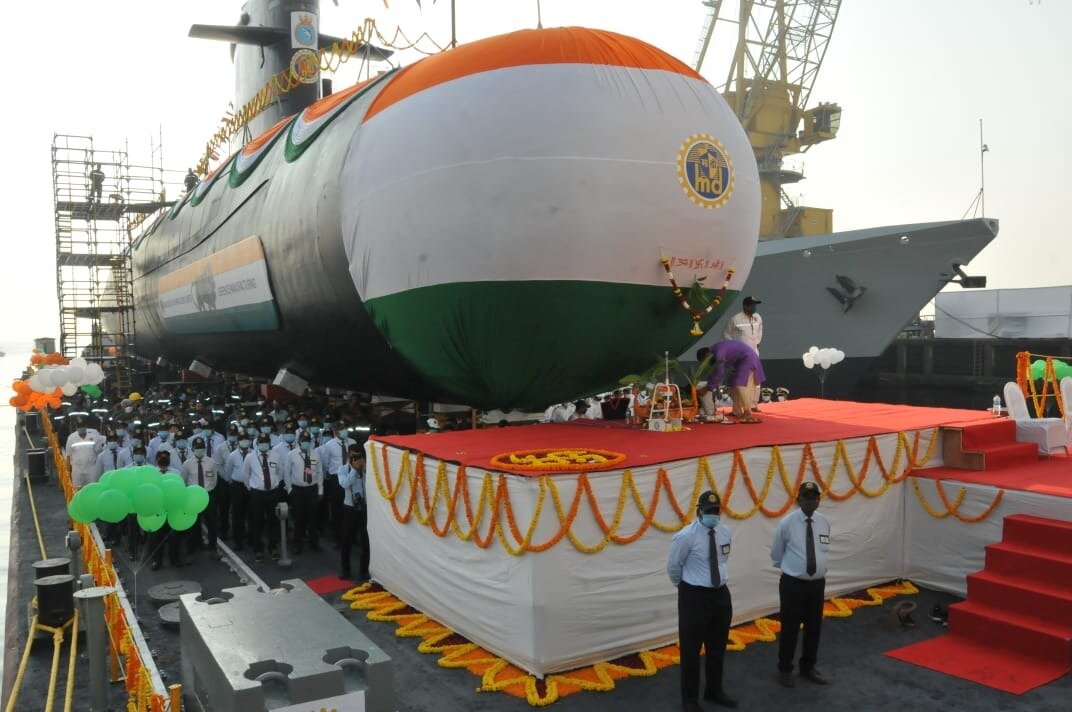
- Background:
- The first Vagir, a submarine from Russia, was commissioned into Indian Navy on 3rd December 1973 and was decommissioned on 7th June 2001 after almost three decades of service to the nation.
- Public shipbuilder Mazagon Dock Ltd (MDL) gave a new incarnation to the submarine with the same name.
- It is named after the Sand Fish, a deadly deep sea predator of the Indian Ocean.
- It is a part of the six Kalvari-class submarines being built in India.
- The state-of-art technology used in the submarine has ensured:
- Superior stealth features such as advanced acoustic absorption techniques, low radiated noise levels, and hydro-dynamically optimised shape.
- The ability to attack the enemy using precision guided weapons.
- The submarine is designed to operate in all theatres of operation, showcasing interoperability with other components of a Naval Task Force.
- It can launch attacks with both torpedoes and tube launched anti-ship missiles, whilst underwater or on surface.
- It can undertake multifarious types of missions i.e Anti-Surface warfare, Anti-Submarine warfare, Intelligence gathering, Mine Laying, Area Surveillance, etc.
- Background:
- Project-75 :
- It is a programme by the Indian Navy that entails building six Scorpene Class attack submarines.
- Scorpene is a conventional powered submarine weighing 1,500 tonnes and can go up to depths of 300m.
- It is given support by the Department of Defence Production (Ministry of Defence) and Indian Navy throughout its various phases of construction.
- The MDL is manufacturing six Scorpene submarines with technology assistance from Naval Group of France under a USD 3.75 bn deal signed in October 2005.
- It is a programme by the Indian Navy that entails building six Scorpene Class attack submarines.
- Other submarines of the ongoing Project-75:
Way Forward
With the launch of Vagir, India further cements its position as a Submarine Building Nation and MDL has more than lived up to its reputation as Warship and Submarine Builders to the Nation This is totally in sync with the current impetus of the Government towards Make in India and Aatmanirbhar Bharat.
Indian Economy
Gujarat Maritime Cluster
Why in News
The Gujarat Maritime Cluster is coming up in the GIFT (Gujarat International Finance Tec-City) City at Gandhinagar to address logistics of ports and seaways.
Key Points
- Maritime Cluster:
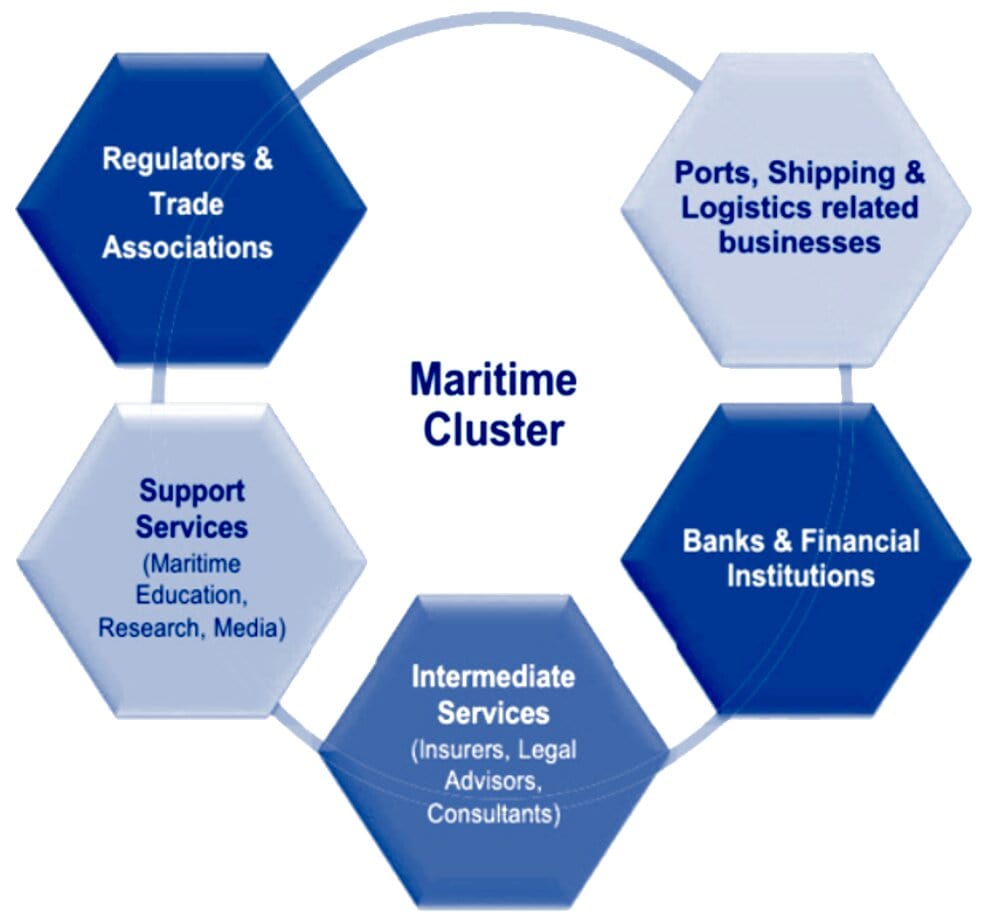
- It is conceived as a dedicated ecosystem of Ports, Maritime Shipping and Logistics services providers.
- It will host an array of maritime, shipping industry players and service providers, along with relevant Government regulatory agencies, in Gujarat International Finance Tec-City (GIFT City), Gandhinagar – India’s first International Financial Services Centre.
- The Gujarat Maritime Board (GMB), has been trying to develop such a cluster through its subsidiary Gujarat Ports Infrastructure and Development Company Ltd (GPIDCL).
- While the project was conceptualised back in 2007, it received in-principle approval from the state government in 2015.
- Benefits of the project:
- Attract Maritime Investments:
- The project will try to bring back businesses that have migrated over the years to foreign locations due to the absence of the right ecosystem in the country.
- Large corporates like the Aditya Birla Group and Tata Group tap clusters in Dubai and Singapore for their maritime needs.
- Economies of Scale:
- Gujarat has a lot of ports and handles 40% of the country’s cargo, but it has not targeted the entire value-chain as a result investors look abroad for the same.
- Dispute Resolution:
- An Alternate Dispute Resolution (ADR) Centre will be set up under the aegis of the Gujarat Maritime University, which will come up at the maritime cluster. A centre such as this does not currently exist in India.
- Will help resolve cases revolving around bunker disputes, ship sales, shipbuilding and repairs, commodities.
- It will provide an option to Indian players seeking to avoid availing the services of international alternate dispute resolution hubs which entail huge costs, time, and travel.
- The cluster is also expected to house the office of the Director General of Shipping.
- Attract Maritime Investments:
Way Forward
- The concept of maritime clusters is new to India, but these clusters have been driving some of the most competitive ports of the world like Rotterdam, Singapore, Hong Kong, Oslo, Shanghai, and London.
- Thus India must ensure a significant footprint in global supply chains of the world with the help of such innovative Ideas.
Important Facts For Prelims
New Species in Andaman
Why in News
Recently a group of scientists has reported a new genus of treefrog from the Andaman Islands called Striped Bubble-nest frog.
Key Points
- Biological name: Rohanixalus vittatus
- The new genus ‘Rohanixalus’ is named after Sri Lankan taxonomist Rohan Pethiyagoda.
- Striped Bubble-nest frog belongs to the genus of the Old World treefrog family Rhacophoridae.
- This is the first report of a tree frog species from the Andaman Islands.
- Bodily Features
- Small and slender body (2-3 cm long).
- A pair of contrastingly coloured lateral lines on either side of the body. Minute brown speckles scattered throughout the upper body.
- Light green-coloured eggs laid in arboreal bubble-nests.
- Arboreal means living in trees or related trees
- They are also known as Asian Glass Frog or see through frogs.
- While the general background coloration of most glass frogs is primarily lime green, the abdominal skin of some members of this family is translucent (allowing light to pass through). The internal viscera, including the heart, liver, and gastrointestinal tract, are visible through this translucent skin, hence the common name.
- The genus has several unique behavioural traits:
- Maternal egg attendance:
- The female (mother) attends the egg clutches until hatching and assists in release of the tadpoles into the water.
- During the first three days after egg laying, the female sits over the eggs and produces a gelatinous secretion with which she glazes (covers) the egg mass through clockwise movement of her legs. This behaviour provides necessary moisture to the eggs laid on exposed leaf surfaces and protects them from insect predation.
- Community egg attendance:
- A large number of egg clutches (over 50) of different developmental stages on a single leaf or plant. Multiple females usually attend such clutches in a behaviour termed as ‘community’ egg attendance.
- Maternal egg attendance:
- Frequent male-male combats involving pushing, kicking and dislodging to mate with a female.
Important Facts For Prelims
Swarna Jayanti Fellowship: DST
Why in News
The Department of Science & Technology (DST) has selected 21 scientists for the Swarna Jayanti fellowship.
Key Points
- The Swarna Jayanti Fellowships scheme was instituted by the Government of India to commemorate India's fiftieth year of Independence.
- It provides special assistance and support to a selected number of young scientists with a proven track record to enable them to pursue basic research in frontier areas of science and technology.
- The award consists of a Fellowship of Rs. 25000 per month in addition to the salary drawn from the parent Institute along with a Research Grant of Rs. 5 lakh per annum by Department of Science and Technology (DST) for a period of 5 years.
- In addition to fellowship, grants for equipment, computational facilities, consumables, contingencies, national and international travel, and other special requirements, if any, is covered based on merit.
- The fellowships are scientist specific and not institution-specific, very selective, and have close academic monitoring.
- Scientists selected for the award are allowed to pursue unfettered research with a freedom and flexibility in terms of expenditure as approved in the research plan.
- The project should contain innovative research ideas and it should have a potential of making impact on R&D in the discipline.
- The project submitted by the selected Fellows are considered for funding by the Science & Engineering Research Board (SERB) as per SERB norms.
- SERB is a statutory body under the Department of Science and Technology, established by an Act of the Parliament of India in 2009.

